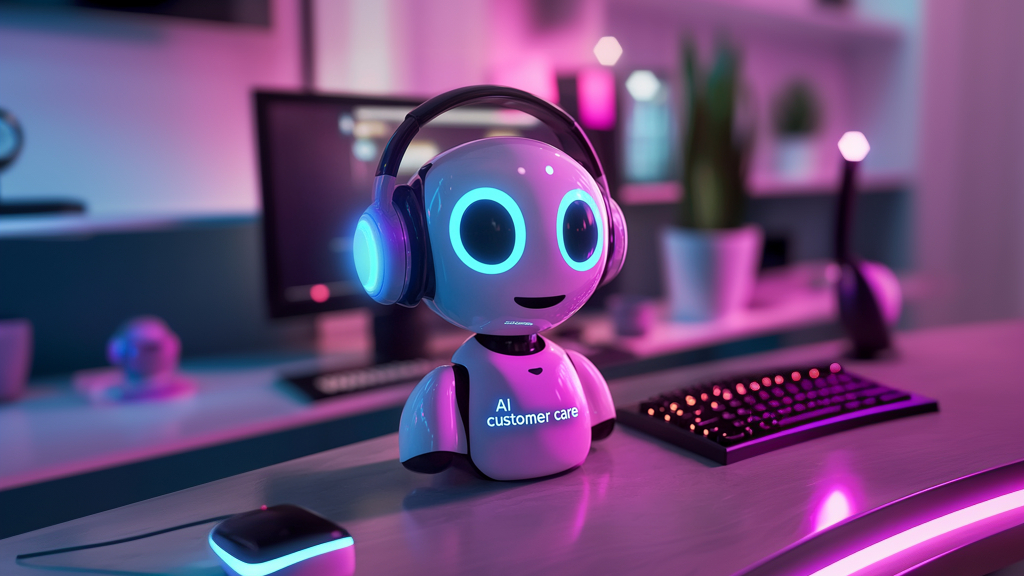In today’s fast-paced digital world, the tools a business uses can make all the difference. Let’s compare two similar businesses—one that has integrated a custom AI agent into its operations and another that continues to rely on manual processes. The differences between them might just reveal how much value an AI agent can bring.
Meet Sarah and John
Sarah owns a growing online store that specializes in eco-friendly products. To stay ahead of the curve, she decided to implement a custom AI agent to manage customer inquiries and personalize the shopping experience. On the other hand, John, who runs a similar eco-friendly business, still relies on more traditional methods for customer support, marketing, and scaling operations.
Their businesses may look alike on the surface, but how they operate couldn’t be more different.
Handling Customer Support
Sarah’s AI-Driven Approach:
Sarah’s AI agent is available 24/7, always ready to jump in when customers need help. It answers common questions, tracks orders, and even helps customers make returns. With the AI agent handling these routine tasks, Sarah’s customer support team can focus on more complex issues, knowing that the basics are always covered.
John’s Manual Operations:
John, meanwhile, has a small customer service team that works regular hours. During peak periods, his team is stretched thin, leading to longer wait times for customers. When John’s team clocks out for the day, inquiries that come in overnight have to wait until the next morning, which often frustrates customers.
The difference is clear: Sarah’s customers receive faster, more consistent service, while John’s customers may face delays.
Personalizing the Shopping Experience
Sarah’s AI Agent in Action:
Sarah’s AI agent doesn’t just answer questions—it learns. When customers visit the site, the AI can suggest products based on their browsing habits. If a customer is looking at eco-friendly yoga gear, the AI agent may nudge them with, “We’ve got some great eco-friendly yoga mats in stock—would you like to take a look?” This personalized approach keeps customers engaged and boosts sales.
John’s Traditional Setup:
John’s site, on the other hand, offers a more one-size-fits-all experience. He has a “recommended products” section on the homepage, but it’s static—everyone sees the same recommendations, regardless of their interests. While this approach works to some extent, it lacks the personalized touch that makes customers feel like the site truly understands them.
As a result, Sarah’s customers feel catered to, while John’s visitors may miss out on products they would have loved.
Scaling Without Extra Costs
Sarah’s Scalable Solution:
As Sarah’s business grows, so do her customer inquiries. But thanks to her AI agent, she doesn’t need to hire additional staff. The AI scales with her business, handling everything from customer support to processing returns. During busy periods, the AI agent can handle a surge of inquiries without breaking a sweat. Sarah can easily scale her operations without increasing her costs.
John’s Growing Pains:
John, however, faces a different challenge. As his business grows, he has to bring on more customer support staff, especially during peak seasons. This not only increases his overhead but also requires training new employees, which takes time. Even then, his team can still become overwhelmed during busy periods, leading to inconsistent service.
Sarah’s business is able to grow more smoothly and cost-effectively, while John faces mounting expenses and service bottlenecks.
Data-Driven Decisions
Sarah’s AI Insights:
One of the most valuable aspects of Sarah’s AI agent is the data it provides. After every interaction, the AI logs key insights—like which products are frequently requested, what common questions customers have, and which items are often returned. This data allows Sarah to tweak her product offerings and improve customer service. For example, if a particular product has a high return rate, she can investigate why and make changes to reduce returns.
John’s Limited Data:
John, on the other hand, relies on basic analytics tools that track sales and web traffic, but he doesn’t get the same detailed insights that Sarah has access to. Without that granular data, he’s often left guessing about customer behavior and how to improve his business. As a result, his marketing efforts are less targeted, and he misses opportunities to optimize his operations.
With the data her AI provides, Sarah makes smarter, data-driven decisions, while John is left relying on trial and error.
The Power of an AI Agent
The difference between having a custom AI agent and not having one is significant. Sarah’s AI agent helps her business run more smoothly, offering personalized customer experiences, reducing operational costs, and providing valuable insights that inform her strategy. She’s able to scale efficiently, keep customers engaged, and make smarter business decisions.
John’s business, while functional, faces challenges that Sarah’s AI agent easily mitigates. Longer response times, higher costs, and a lack of personalization put him at a disadvantage. In a competitive market, these differences can have a huge impact on customer satisfaction and business growth.
For businesses like Sarah’s, AI agents are no longer just a luxury—they’re becoming a necessity for staying competitive in today’s fast-paced world.






